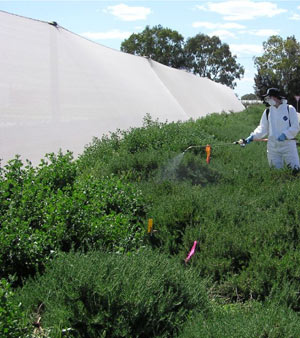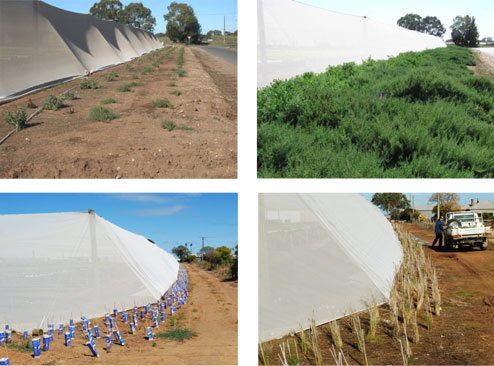|
|
Horticulturalists on the Northern Adelaide Plain continue to experience serious crop losses due to Tomato Spotted Wilt Virus (TSWV). A key source of TWSV are the pest thrips including Western Flower Thrip (Frankliniella occidentalis) which transmit the virus are exotic weeds which infest land around horticultural production facilities in the region. In addition, the region has a degraded natural landscape and there is a serious lack of commercial incentives to improve biodiversity in the area. By 1889 exotic weeds had infested parts of the region and remaining woodlands in the Angle Vale and Virginia areas were cleared for market gardens after World War I. Previous research, has shown that TSWV vectoring thrips are rare on a range of native broadleaf plants and grasses. In addition, a number of potentially beneficial arthropods were present on native plants in the region. Here we build on these findings by examining how key insect species interact with native plants and nearby crops, in attempts to understand how we can manipulate the environment at a property scale, to suppress/enhance specific insect species. As part of this project we established native revegetation plots near several horticultural production facilties in the region. This report details the research and extension undertaken in this project and covers the key findings, industry implications and recommendations.
Key Findings :
Key Findings (cont) :
SEE ALSO :
Acknowledgements : Special thanks go to Nick Stevens for his valued contribution to identifying our parasitoids. Thanks to consultants Mr Bill Doyle (botanist) and Mr Mario Niesingh (revegetation provider – Environmental Revegetation Australia) for assistance and advice on planting native plants. We would also like to thank members of the ‘Revegetation at property scale’ project management team Tony Burfield, Domenic Cavallaro, Bill Doyle, Gavin Limbert and Stacee Brouwers for their considerable knowledge, advice and practical support towards the delivery of the project on the Northern Adelaide Plains. Thank you also to the vegetable growers and their families Mr Thien Vu and Mr Dino Mussolino who kindly hosted two of our on-farm trials in Virginia, and for the constant support provided by the Virginia Horticulture Greenhouse Modernisation Project. To the City of Playford revegetation staff, Green Corps and the Youth Conservation Council for planting hundreds of native plants. Special thanks to Liz Millington, Anthony Fox, and Jeanette Chapman for working so tirelessly with us to close the gap between Horticulture and Natural Resources Management on the Northern Adelaide Plains. We thank all SARDI Entomology Unit staff who generously provided a diverse range of support over the previous 6 years. This project has been facilitated by the South Australian State Government, Rural Industries Research and Development Corporation (RIRDC), Virginia Horticulture Centre, The The Australian Government provides matched funding for all HAL’s R&D activities. |
||
|


